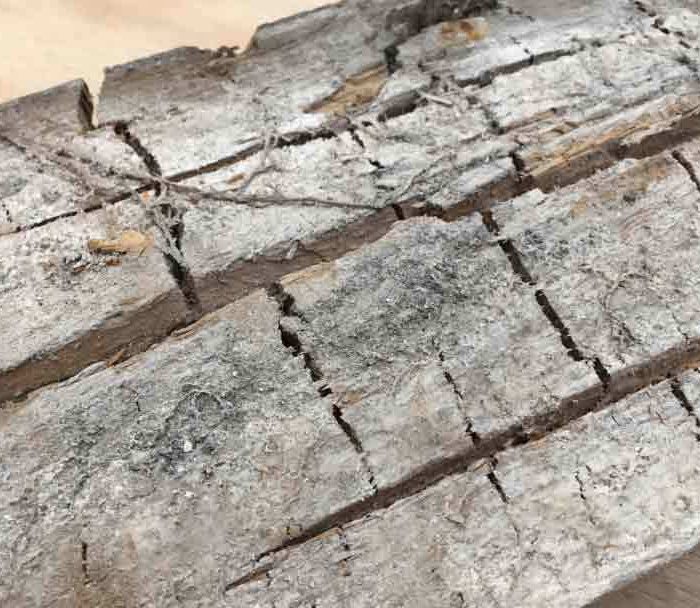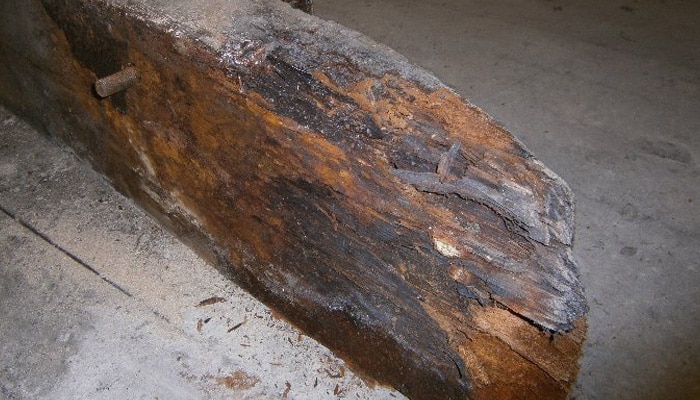Wet & Dry Rot Differences
- 30 Year Guarantee
- Experienced & Qualified, Local Surveyors and Technicians
- Property Care Association Awards Winner
The best way to resolve your property care problems Is to start asking questions. We are contacted everyday by homeowners and landlords who are worried about the condition of their property.
“What’s the difference between dry rot and wet rot?” This is one of the most asked questions that we receive. Both are wood destroying fungi and there are certain tell-tale signs between the two. However, if you have spotted signs of rot or damp within your property, we would advise that you contact a member of your local Richardson and Starling team for advice.
It is important that you correctly identify which fungi is affecting your property. See below to find out more about these two property problems.
What are the Main Differences?
Wet rot and Dry rot are two different types of fungi. One of the main differences between wet rot and dry rot is that wet rot needs a higher moisture content to grow. Wet rot fungus likes to grow on timber with a high moisture content of around 50% and above while for dry rot to grow it will germinate at a lower timber moisture content of around 20% to 30%.
There are many different types of Wet rot however there is only one Dry rot fungi. Telling the difference between dry rot and wet rot is the first step to successful eradication of the rot outbreak.
How Wet Rot and Dry Rot are different?
Dry rot in your property is serious and it should always be resolved as soon as possible. It is an aggressive destructive form of decay in a building as it spreads away from the source of damp and destroys timber and other property fabric.
As for wet rot fungus, this type of rot occurs more frequently but is more localised. The decay usually affects timber at the source of the damp. However, do not underestimate wet rot. If left untreated wet rot can cause major structural problems.
Dry Rot is only caused by the fungi Serpula Lacrymans and it is the most serious form of fungal decay in buildings. It can spread through a complete building and destroy the fabric of the property. As we have mentioned dry rot can affect any unprotected timber which becomes damp with a moisture content of above 20% which can be achieved quite easily in a property.
Wet rot and Dry Rot may appear as a result of defective internal plumbing or penetrating damp caused by defective render, guttering and downpipes. Both Wet and Dry rot can cause significant damage before a homeowner is aware that there is even a problem as it can germinate behind wall fabrics and below floors.
Identifying Dry Rot
- Fungus affected timber shrinks and causes cracking generally along the grain of the timber
- The rot affected timber may leave a surface veneer intact hiding the rot
- Timber can feel soft and spongy to the touch
- The mycelium can have a lemon-yellowish tinge
- The mycelium turns to grey when older
- Damp musty smell
- Fruiting bodies grow when the rot is well established (mushroom like appearance)
- Red spore dust from the fruiting body is evident in rooms.
- Paint finish can appear damaged, highlighting the cracked timber below
- Dry rot mycelium will grow along and through walls to find more timber to colonise and can spread right through a property
Property rot attacks are extremely complex and they can be hard to tackle. If the rot outbreak is misdiagnosed, then this will cost extra money to resolve. Each property problem is unique and requires its own specific plan to eradicate the fungal attack. If you are unsure of the type of rot your local Richardson & Starling branch will help.

Identifying Wet Rot
- Fungus affected timber shrinks and causes cracking to the timber
- Timber is likely to feel soft and spongy to the touch
- Discolouration of timber is often present
- In some cases, mycelium strands may appear on the timber
- Wet rot stays to the damp area and does not spread
- Paint finish can appear damaged, highlighting the cracked timber below
- Damp musty smell
Where Does Wet Rot Grow?
Wet rot is a fungal infestation which thrives in damp conditions. Any unprotected timber in your property from your roof to the ground floor which becomes damp is at risk of fungal attack. There are many types of wet rot fungi and the infestation should be treated as soon as possible as it can structurally deteriorate timbers in your property or home.
Wet rot can often lead to major structural damage if it is left to grow unchecked. Fortunately, wet rot does not spread through masonry and the growth of wet rot will cease when the moisture is removed.
Any damp source can lead to a wet rot attack including damp from rising damp, leaking roofs, gutters and problems with defective masonry pointing or render can all create the right damp conditions in your property to germinate the wet rot fungi. Wet rot will stay in the vicinity of the damp source.

Where Does Dry Rot Grow?
Any unprotected timber in your property from your roof to the ground floor which becomes damp is at risk of Dry Rot attack. If you think that you have spotted the presence of dry rot, then you should get advice on the affected area. Before you start looking for dry rot, it is worth knowing that is it can appear in an old building or a modern structure. Dry rot is caused by dampness that germinates the dry rot fungus spore on the timber. This means that it can appear almost anywhere. This type of rot is often caused by leaking roofs, penetrating damp due to defective gutters and masonry and plumbing leaks inside your property.
It is common for dry rot to thrive in roofs, underfloor areas or behind wall fabrics that have poor ventilation.

How to Treat Dry Rot?
Dry rot needs to be treated by specialists. Our team will help you to locate and eliminate the outbreak of dry rot within your property. The affected fabric and timber requires to be removed and replaced and the masonry treated with a biocide to eradicate the Dry Rot growth. In terms of treating dry rot the following will happen:
- Richardson & Starling specialists will identify the source of moisture which is maintaining the rot.
- We will highlight the defects causing the damp such as overflowing or damaged gutters, defective render or defective internal plumbing that is causing the problem and requires repair.
- Our team will strip out the affected area including decayed wood, damaged linings, panelling, skirting’s, ceilings wall fabric and flooring.
- The affected structural timbers will be repaired, protecting them from damp masonry
- The affected area will be treated with the appropriate fungicide to create a protective chemical treatment during the drying out period.
- Ensure the full extent of the rot attack has been dealt with prior to reinstatement of the wall, floor and ceiling fabric.
There are several different products available for dry rot treatment to timber. There are products that enter the timber itself as well as ones designed for coating the timber surface. Fungicidal gel can be painted onto the timber surface and comes in different concentrations depending on whether you want to prevent Dry Rot or treat it.
How to Treat Wet Rot?
As wet rot is different from dry rot the following stages will be used when we are eradicating wet rot:
- Richardson & Starling specialists will identify the source of moisture which is maintaining the rot.
- We will highlight the defects such as overflowing or damaged gutters, defective render or defective internal plumbing that is causing the problem and requires repair.
- Strip out the full extent of the affected area.
- Repair or supplement any weakened structural timber protecting new timber from the damp masonry.
- Once that has been done, we will then apply fungicidal treatment to the remaining adjacent timbers that may be at risk
- Ensure the full extent of the rot attack has been dealt with prior to reinstatement of the wall, floor and ceiling fabric.
The first and most crucial part of wet or dry rot treatment is to identify and stop the source of moisture. In some cases, internal issues such as leaking radiators can encourage wet rot problems. If you suspect that there is a wet rot problem within your property, call a member of our local wet rot specialist team today.
Get in Touch with Richardson & Starling
Did you know that we give a 30-year guarantee for Dry, Wet rot, Rising Damp and Woodworm treatment? We are confident that we will be able to help you identify and treat the rot problem affecting your property and give you peace of mind that the rot attack has been dealt with.
If you suspect that you have a property problem, get in touch with your local Richardson and Starling wet rot and dry rot eradication specialists. We will be happy to help you with accurate diagnosis and cost-effective remedial repairs to solve your property problem. We have branches throughout Scotland and North of England who are focused on property preservation.
